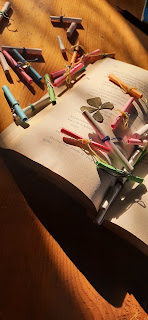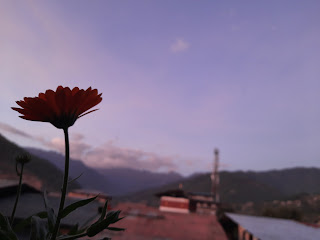Sustainability Starts at Home
"Sustainability Starts at Home."
Sustainability Starts at Home
Small Changes, Big Impacts
Plastic bags were a questionably interesting replacement for the shuttlecock kicking game when I was a kid. That was what I played with during the cold months of winter, when the growth of clovers was null for a bundle formation. I remember snitching up on some plastic bags from the kitchen– plenty of them were washed and stored in a basket, as in every typical Bhutanese household. As a kid, I was baffled as to why my mother did not spare me a single one, which I had to secretly rummage through when she was not around. At the end of a tiring play, the ragged piece of plastic would wordlessly fly away, carried by the currents of the wind. That was one day, when I learned from her, “Sustainability starts at home.”
As individuals, many of us are oblivious to the ecological footprint we create. The impact of one’s lifestyle on the curve of sustainability seems obscure on a personal level– taking longer baths, shopping for new clothes, going on short drives– until the accumulation of these mode flashes before our eyes in the form of an uncertain, unhealthy future. I believe that the very idea of sustainability springs from the place we live in and grow– home. As a single, mortal being, it would be difficult to alter the world at large, but each one of us can change some simple routines in our lives that, when collectively done, can ultimately help us accomplish the goals of sustainability. These are my thoughts on how we can bring about changes to our homes and eventually to our planet.
Donation Drive for Clothes
The fashion industry is one of the largest contributors to environmental degradation. People rush to buy new, trending clothes every now and then. Their closet bursts out with shirts, dresses, pants, and shoes. While some accessorize themselves, a part of the population lacks proper clothing and runs barefoot. This has always been one of my aspirations: to conduct a donation drive. Every year, my family frees up our cupboards of clothes and shoes that could be donated to the needy. What if many people take an interest in this and start their own, homely donation drive? This would reduce the pollution of textiles, and who knows, you might earn a smiley merit.
Take One, Read One, Leave One
Aligning with one of the goals of sustainability, education has been one of the main roots that hold the power to awaken the minds of individuals. While access to knowledge has been paved by free online resources, there are still many underprivileged people who wish to enjoy this literacy. My idea of “Take One, Read One, Leave One” was enlivened by a visit to a temple during a vacation. I was awe-inspired by how the library there was open to visitors, where we were encouraged to take books for free and read. I believe that if small community members donated books and introduced this free library, the path to the growth of sustainable minds could be built.
Food for Thought
Growing up in a food-conscious family, I developed respect and gratitude for the meals I received. It always saddened me to see how some people had to work tirelessly, simply to put a loaf of bread on their table. Similar to the idea of “Take One, Read One, Leave One,” the concept of “Food for Thought” arises from our traditional Bhutanese belief: “It’s easy to spill the rice, but when the rice spills on you, it’s difficult.” Considering the amount of food that goes to waste, if people could gather together to open small shelves for setting up extra food items, this could help those in need and reduce food waste to a great extent.
One person, One Plant
During my primary days, every student was designated a small spot in a garden with a plant to take care of. I was a nature enthusiast, and my love for gardening helped me nurture the small cypress tree. This thought provoked my curiosity and made me wonder: What if a small society labelled a barren land and every fellow member nourished a potted tree until it was ready to be planted? If this plan succeeds, we might have a whole grassland or perhaps a forest as time passes.
All the while, for us to achieve these goals, we must put our minds into manifesting them, both on individual and collaborative levels. This might seem like a simple leap individually, but when integrated together, a sustainable future awaits us, guaranteeing the happiness of now and the time to come. This can ultimately bring us together, as ASEAN Countries and beyond.
This is the link to the video, posted on YouTube:
https://youtu.be/53-GM-ssmec?si=xFgapWpST-FteIWz




Comments
Post a Comment